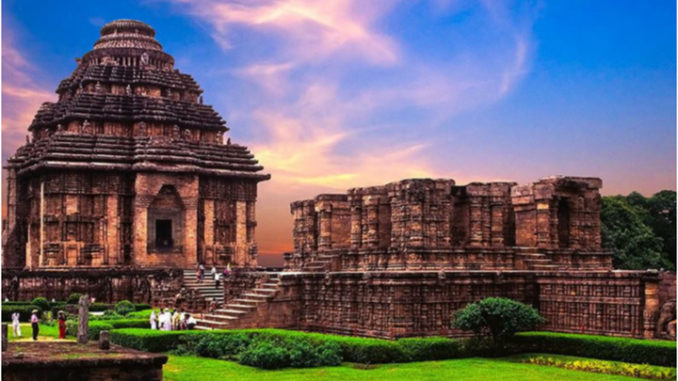
Odisha- the land of paddy fields and palm-fringed silver beaches, temples, rivers, waterfalls and tribal people, is filled with major attractions such as the temples of Bhubaneshwar and Puri, miles of clean beaches and the magnificent Sun Temple of Konark. Odisha, the state with a glorious history, is filled with nature and adventure. Inhabited by tribal people, the not-so-developed state of Odisha must be visited to have the experience of the myriad wonders it has in store for everybody. Also known as the soul of India, Odisha is a place where you can relax on the beaches, visit the famous temples and explore the beauty and bounty of nature and wildlife. You can also find various monuments which gloriously stand to remind you of the history of the land. Odisha’s art and culture, fairs and festivals, dances and music are a treat for the tourists who love to see colours and wish to enjoy life to the fullest. Visit the soul state of India and come back with a bag full of memories that will remain etched in your mind for a long time.
Puri
Rest, Relax and Recall stand totally redefined on the seat of Lord Jagannath- Puri india. Known for its Historic antiquities, Religious sanctuaries, Architectural Grandeur, Seascape beauty, moderate climate and spiritual significance, this coastal district of Odisha (Orissa) attracts a number of visitors every year.Puri tourism has always been popular among traveler enthusiast due to the existence of many amazing Tourist Places in Puri including the Jagannath Temple Puri, Odisha(Orissa).
With a rich historic heritage dating back to 3rd century BC, this temple town welcomes both the pilgrims and fun seekers with open arms, offering its splendid beaches to the latter. Having one of the largest briny water lakes in India namely the Chilika Lake, the city offers an ideal resort to migratory birds.
Better known as the earthly abode of Lord Vishnu or Jagannath, Puri has a rich cultural heritage presenting a unique blend of claims of time and eternity with a power answerable only to wisdom. Considered to be utterly pious by the Hindus, Puri is one of the four sacred dhamas representing a rare spark of immortality owned against the powers of negation , through a spirit of university , adaptability by the Oriya people.
The city is also possesses a very significant monastery in the form of Gobardhan matha established by Adi Shankaracharya on his visit to Puri. Other religious heads and dignitaries like Chaitanya Mahaprabhu, Rai Ramananda , Jayadeva, Gorakhanath- the father of Nath cult of religious iconoclasm and Saint Totapuri- a vedant teacher of Ramakrishna have also visited Puri leaving indelible imprints of their philosophies on the cultural curtain of the city.
In addition to its undaunted spiritual significance, it is the quintessential characteristic of its culture and philosophy that has helped Puri to be transformed from Pan-Indian to Pan-Continental. This is further made clear by the celebration of ‘The Car-Festival of Lord Jagannath’ and ‘Puri Beach Festival’ with an equivalent gusto thus presenting a fine blend of spiritual and sensory pleasures.
Recognition of the Rath Yatra at a global level, acceptance of Odissi as a classical dance form, Orissan School of architecture referred to as poetry frozen in stone and ‘the Mahaprasad brotherhood’ have no doubt helped a lot to fetch Puri, the status of an internationally known city.
Konark
Located on the sea-shore at a distance of 33 kms from Puri and about 64 kms from Bhubaneswar, Konark india is also known as Konaditya. The name Konark has been derived from the words Kona and Arka, Kona meaning corner and Arka meaning the sun. Konark Travel & Tourism provides complete guidance about tourist attractions of Konark.
Konark is one of the most famous tourist destinations in India from the spiritual standpoint and boasts of one of the best known architectural specimen. Konark is known for Sun temple which was dedicated to the Sun God by Samba, Lord Krishna’s son who was cured of leprosy by the god. The temple has been designed in the form of a chariot, pulled by 7 horses carrying the Sun god. This chariot stands on 24 wheels, each wheel having a diameter of about 10 meter. Attached with a set of spokes, the wheels have excellent carvings. The main attraction of this temple is the idol of Jagmohana that showcases the brilliance of the contemporary architects of those days. Built in the year 1278 by Ganga King Narasimha Deva, the temple is referred as the Black Pagoda.
Another temple resembling the Sun temple is Melakkadambur Shiva temple. This temple too is in the form of a chariot and is one of the oldest temples of Konark. Built during the period 1075-1120 by Kulottunga Chola I, this temple is believed to have set the pace for other chariot temples in India.
The tourists coming to Konark also visit the Chandrabhaga Beach, one of the most exotic beaches in Odisha (Orissa) offering a picturesque view. Surrounded by palm and casuarinas, the beach is at a short distance from the sun temple. The Archaeological Site Museum, another site of tourist interest is an exceptional collection of the various pieces of loose sculptors from the remnants of the Sun temple complex.
The Konark city is also known world over for its fairs and festivals. The Konark Dance Festival held here comes as a true rejuvenator of the ancient classical dance forms like Odissi, Bharatnatyam, Kathak, Kuchipudi and the local Chhau dance. Another festivity observed with a great fanfare at Konark is the Magha Saptami Mela held on the banks of Chandrabhaga River. Millions of devotees gather here to take a holy dip in this river on the occasion as this dip is believed to be a sure cure for all illnesses.
Bhubaneshwar
The history of the city stretches back over 2000 years. The area first appears as the ancient capital of Kalinga. Bhubaneshwar India, the ‘city of temples’, named after Tribhuvaneswar, ‘Lord of Three Worlds’, still preserves over 500 of India’s finest temples, around which the religious life of the city revolves.
Mythological references and the epigraphic sources describe the area as Ekamra Kshetra and Saiva Pitha. In 1936, the Odisha (Odisha (Orissa)) became a separate province with Cuttack as its Capital, which was eventually changed to Bhubaneswar in 1956.
Together with Puri and Konark, Bhubaneswar forms the ‘golden triangle’–one of the most visited destinations in East India, for its proud possession of magnificent sculpture and majestic architectural heritage.





Oriya culture is a rich mix of ethnicity and tradition. Being the home of famous temples and religious shrines, the pious and spiritual customs intermingle in the social interactions of Oriyas. Music and dance compliment the religious rites and rituals. Oriya culture started its development process a long time back. Discussed below are some of the major aspects of Oriya culture which provide a deeper insight into the life and lifestyle of the Oriya people.
https://www.indianetzone.com/5/oriya_culture.htm
The state of Odisha hosts some of the most resplendent beaches of the country embraced with the beauty of magnificent Eastern Ghats Mountain Range in India. Each of these beaches have some or the other unique features which owes to their popularity and invites a large number of tourists throughout the year.
https://www.indianetzone.com/71/beaches_odisha.htm